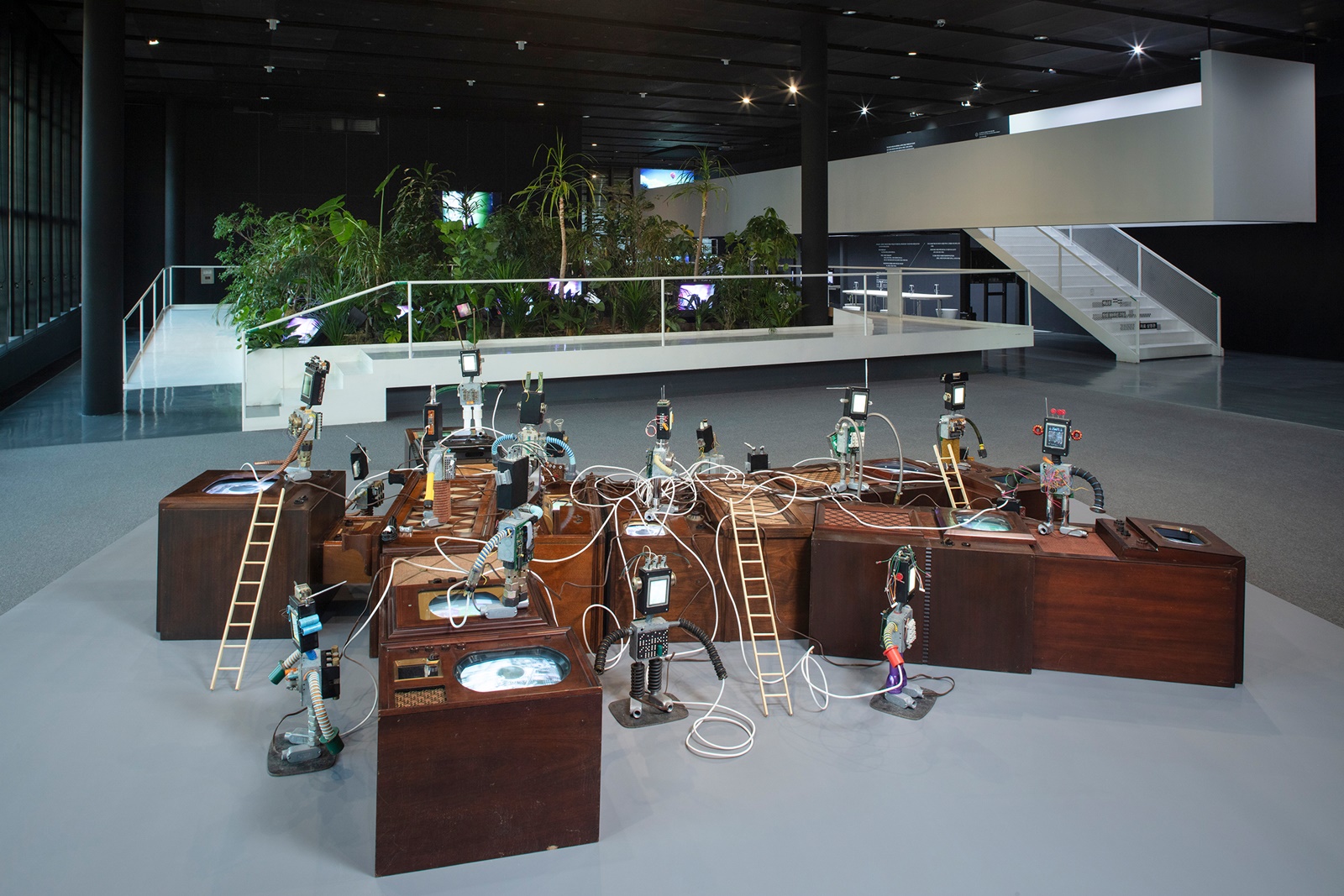
Gulliver’s motif comes from Gulliver’s Travels, a 1726 book by Jonathan Swift. Lying on the ground, the giant Gulliver is a massive robot stretching for over four meters in length. His body consists of a total of 11 old TV cases and radio case and similar items, while two videos are shown on 11 cathode-ray televisions. One shows a cyborg striding over a high-tech media environment, along with images of self-driving and electronic highway travel rendered in computer graphics. The other alternately shows Robot K-456, landscapes from around the world, and computer graphics. As its videos show the different aspects of the present and future, Paik’s Gulliver captures the stories and imaginings of different societies.
The tiny robots that Paik has created with his Gulliver take on different forms. Their bodies are variously composed of machinery parts, screws, wires, and pipes, while their heads are made from five-inch LCD televisions. The videos showing in the robots’ heads are produced with colorful, gaudy computer graphics, showing a performance by Paik’s Robot K-456 as it walks down a New York street; toy robots being operated; and a performance by Charlotte Moorman that has been manipulated with a video synthesizer. Paik shows the contrast between the lively tiny robots and the relatively languid, supine giant Gulliver, and a glimpse at the theatrical situation that unfolds as the robots climb up and down ladders tying Gulliver down with wires.
- Artist
- Nam June Paik
- Date
- 2001
- Classifications
- robot , video
- Medium
- 11 CRT TV sets, 11 vacuum-tube TV cases, 1 vacuum-tube radio case, 18 Lilliputian robots(LCD monitors), 3 wooden ladders, 4 video distributors, 4-channel video, color, silent, DVD
- Dimensions
- 59 x 432 x 371 cm
- Collection No
- 277




